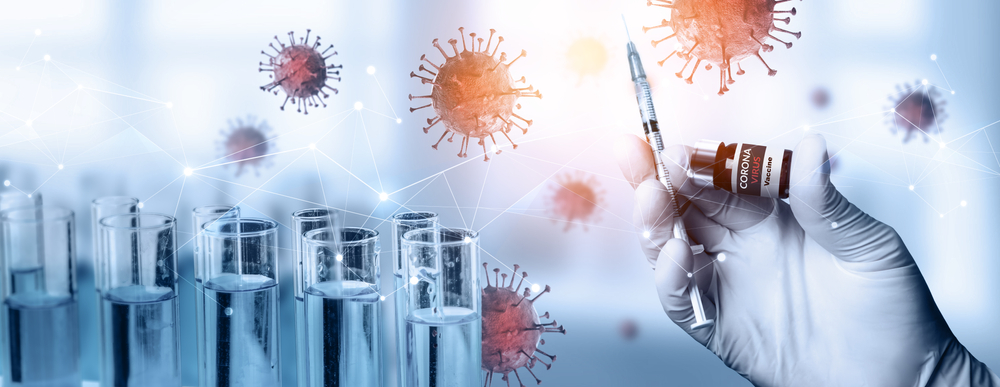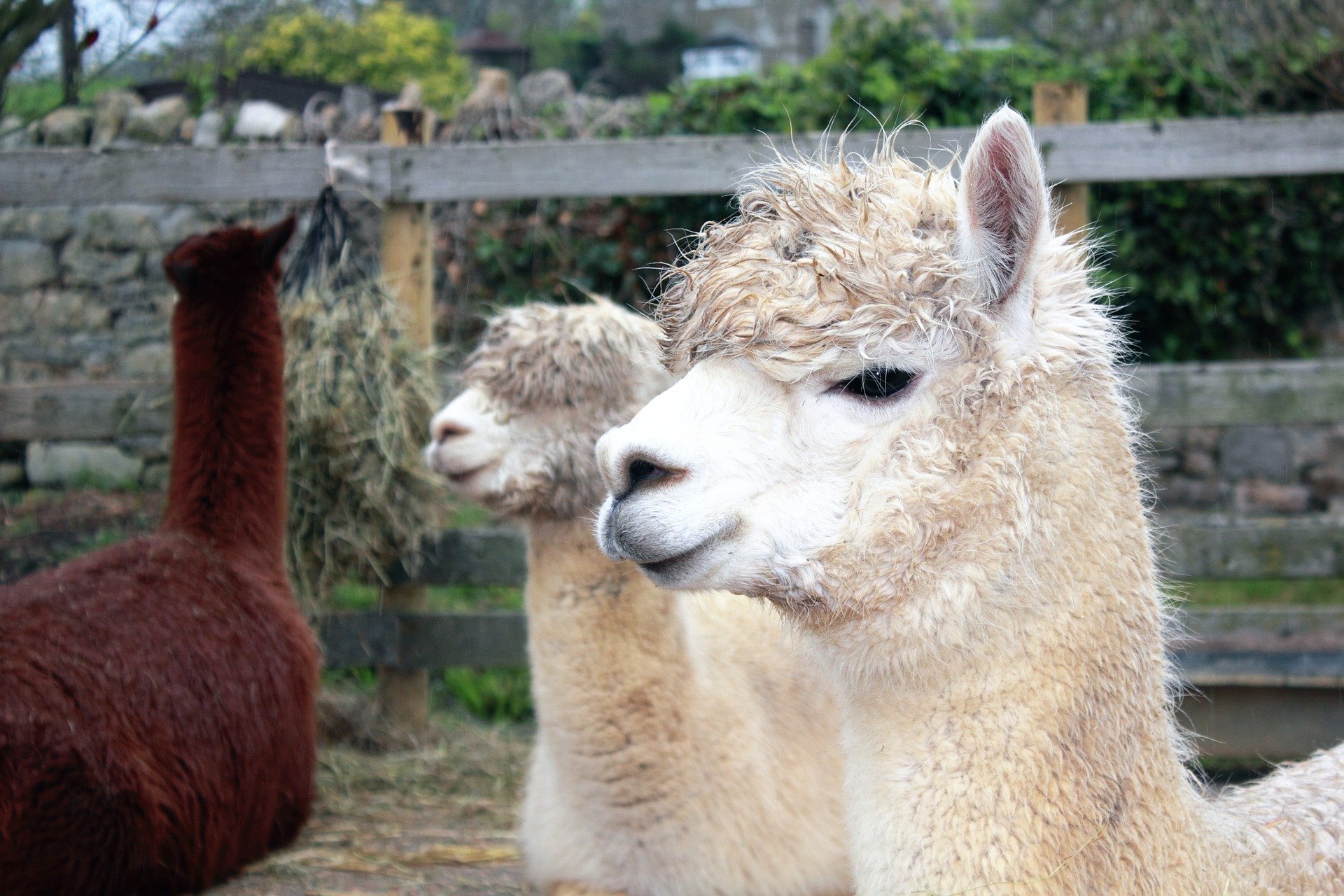Researchers at the National Institutes of Health (NIH) in the US have isolated small antibodies called “nanobodies” from a llama named Cormac that can block the SARS-CoV-2 coronavirus. One nanobody in particular, called NIH-CoVnb-112, was shown to be able to prevent COVID-19 infection from the novel coronavirus by targeting both the spike protein on SARS-CoV-2, as well as the angiotensin converting enzyme 2 (ACE2) receptor that it binds to on human cells.
The study was led by neuroscientists Thomas J. “TJ” Esparza, BS, and David L. Brody, MD, PhD, who work in a brain imaging lab at the NIH’s National Institute of Neurological Disorders and Stroke (NINDS). Preliminary results from the study were published in the journal Scientific Reports.
The nanobody could be administered in either liquid or aerosol form through an inhaler without compromising its activity.
Only a small amount of blood from Cormac was needed to isolate the SARS-CoV-2-specific nanobodies that were generated upon exposure to a small portion of the virus.
Nanobodies are about a quarter of the size, and approximately one tenth of the weight, of a typical human antibody. They are naturally produced by camelids, a group of animals that includes camels, llamas and alpacas.
Related: Scientists Use Llama Antibodies to Neutralize COVID-19
Nanobodies are attractive therapeutic agents because of their small size and simple structure, which allow them to be more easily used as templates to design antibody drugs compared to human antibodies. Owing to their size, they can be grown in bacteria as opposed to larger animal or human cells, making them easier and cheaper to produce. They also demonstrate greater efficacy and are more stable than traditional full-sized antibodies.
Nanobodies are small because they are essentially only the tips of the heavy chain protein arms of a human IgG Y-shaped antibody. These regions play a crucial role in the detection of antigens on viruses, bacteria and other pathogens.
Several groups have been researching nanobodies as treatment options for COVID-19. Researchers at the Rosalind Franklin Institute in the UK used llama-derived nanobodies to design a cocktail of antibody drugs to target SARS-CoV-2. Clinical testing of the nanobody cocktail is anticipated to begin soon.
In addition, scientists at the University of Pittsburgh School of Medicine used a cryo-EM method to isolate neutralizing nanobodies from a llama named Wally after it had been immunized with a protein fragment from the SARS-CoV-2 virus.
Meanwhile a research team in Europe with researchers the European Molecular Biology Laboratory (EMBL) in Hamburg, Germany and the University of Zurich, Switzerland developed synthetic neutralizing nanobodies called “sybodies” that target the receptor binding domain (RBD) of the SARS-CoV-2 spike protein.
At the NIH, Esparza and Dr. Brody were actually studying llama nanobodies in brain imaging.
“For years, TJ and I had been testing out how to use nanobodies to improve brain imaging. When the pandemic broke, we thought this was a once in a lifetime, all-hands-on-deck situation and joined the fight,” said Dr. Brody, who is also a professor at Uniformed Services University for the Health Sciences and senior author on the study.
“We hope that these anti-COVID-19 nanobodies may be highly effective and versatile in combating the coronavirus pandemic,” he said.
Nanobodies are not new in medical research. A couple of years ago, researchers demonstrated that humanized nanobodies may be more effective at treating an autoimmune form of a rare blood disorder (thrombotic thrombocytopenic purpura) compared with current therapies.
Cormac
Since the onset of the pandemic last year, researchers have worked to design neutralizing llama nanobody drugs against the SARS-CoV-2 virus’ surface spike protein.
The NIH researchers took a bit of a different approach in identifying the most effective nanobodies against the coronavirus.
“We developed a method that would isolate nanobodies that block infections by covering the teeth of the spike protein that bind to and unlock the ACE2 receptor,” said Esparaza. The spike-ACE2 interaction is critical for the entry of the virus into host cells.
Esparaza and Dr. Brody used a purified version of the SARS-CoV-2 spike protein to immunize Cormac five times over a span of 28 days. They then tested hundreds of nanobodies and found that Cormac produced 13 nanobodies that might be strong candidates.
Llama Nanobody Can Block Both Spike and ACE2
In their experiments, the NIH-CoVnb-112 nanobody was found to work extremely well and had binding affinities for both the spike protein and its receptor. In vitro studies showed that the nanobody bound to the ACE2 receptor with two to ten times greater affinity than nanobodies produced by other labs. Some of the other experiments demonstrated that the nanobody could also bind to the ACE2 receptor binding portion of the spike protein.
The group went on to show that through these inhibitory actions, the NIH-CoVnB-112 nanobody could prevent COVID-19 infections. The researchers used a harmless, SARS-CoV-2 mimetic, or a “pseudovirus,” and genetically mutated it so that its spike protein could be used to infect cells expressing ACE2 receptors. Upon introducing the virus to cells in petri dishes, the scientists observed that cells treated with a low amount of NIH-CoVnb-112 nanobodies protected them from infection by it.
What is even more attractive about the nanobody is that it was effective as a spray formulation or in an inhaler format. It worked to prevent infection when sprayed on cells through an apparatus resembling a nebulizer, or an inhaler.
“One of the exciting things about nanobodies is that, unlike most regular antibodies, they can be aerosolized and inhaled to coat the lungs and airways,” said Dr. Brody.
The research team has filed a patent application for the NIH-CoVnB-112 nanobody.
“Although we have a lot more work ahead of us, these results represent a promising first step,” said Esparza. “With support from the NIH, we are quickly moving forward to test whether these nanobodies could be safe and effective preventative treatments for COVID-19. Collaborators are also working to find out whether they could be used for inexpensive and accurate testing.”
Llamas could be unassuming saviors in the pandemic with their unique and powerful immune defense tools that can be made to fit and lock up the SARS-CoV-2 virus that continues to run rampant around the world.












Join or login to leave a comment
JOIN LOGIN